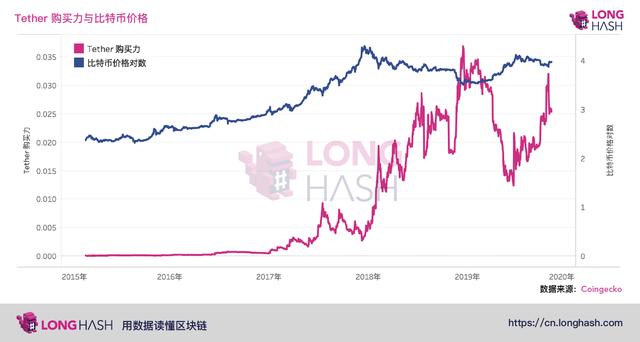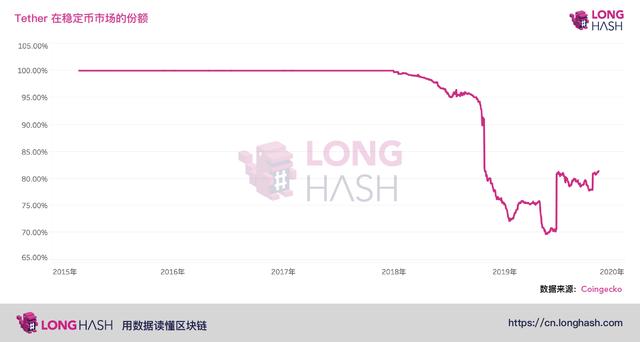Data Analysis | Tether Manipulation Behavior Is Not the Reason for the Bitcoin Bull Market in 2017
Source / LongHash
Recently, an academic paper claimed that Tether's manipulation led to the 2017 bitcoin bull market, which attracted the attention of all parties.
This paper was originally published in 2018, but has recently added some new analysis. According to the personal website of Prof. John Griffin of the University of Texas at Austin and one of the authors of the paper, the prestigious peer-reviewed journal, the Journal of Finance, is coming soon. Published the latest version of the paper.
Tether denied the argument in the paper, ridiculed the study as "unrealistic," and said that "the author clearly lacks a fundamental understanding of the cryptocurrency market." However, in addition to broadly proposing “methodological flaws” and “lack of complete data sets,” Tether did not explain why the paper's arguments lacked value.
- The "USDT Collective Claims", which has attracted worldwide attention, is inseparable | full text translation
- Market analysis on November 20: BTC gradually approached the $8,000 mark, and the subsequent retracement space was limited.
- PayPal leads, YC participates, and cryptocurrency company TRM receives $4.2 million in financing
In addition, Roche Freedman, a New York-based law firm, filed a class action lawsuit against Tether and its sister company, Bitfinex, in October this year, accusing them of manipulating the market and money laundering. The lawsuit included the claim that the company issued a large number of Tethers without reserve support to manipulate the price of the entire cryptocurrency market.
Tether also denied the authenticity of these claims.
Tether's controversy
Tether has released the most popular stable currency in the encryption market, but it may also be the most controversial stable currency.
The company claims that each Tether issued is 100% supported by its reserves, although its definition of “reserve” seems to have changed from “traditional currency” to “traditional currency and cash equivalents at some point this year, and sometimes includes Other assets and receivables from loans provided by Tether to third parties".
In addition, the company’s stated level of transparency has changed from “professional auditing” to no external auditing at all. According to Bitongx shareholder Zhao Dong in September this year, at least 83.75% of Tether is backed by the US dollar reserve, which does not include borrowing for Bitfinex.
Despite the changes in the official commitments, the market is still confident in Tether, as evidenced by its almost constant 1:1 ratio against the US dollar. In addition, it is still the most stable currency in the market.
Even the lawsuit filed by the Attorney General’s Office in New York only temporarily depressed the price of Tether, which accused Bitfinex of misappropriating Tether’s client funds.
Assessing allegations about Tether manipulation: review paper
What is the truth about the core of this controversy? We will try to find out the answer. Let us briefly review this controversial academic paper, Tether's so-called "unrealistic" research.
The wording of the paper is quite clear, which is not common in academic papers. The first edition of the paper mentions: "It is not so much based on the needs of cash investors, it is better to say that these models are more in line with supply-based assumptions, that is, digital currencies without the support of funds will lead to the expansion of cryptocurrency prices."
We are not sure whether the upcoming version will retain this tough wording. However, after carefully reading the evidence provided in the article, we do not think that such a tough conclusion is reasonable.
First, the only evidence in this paper that supports Tether's lack of reserves is the roundabout assumption about how cash management can be applied to Tether's audit. The author of the paper assumes that since Tether is audited every month, if the company issues a large number of Tether stables a month, it will need to sell some of the bitcoin assets at the end of the month, which will cause bitcoin prices to approach each month. It fell at the end of the month. The authors have shown through their evidence that the end-of-month effects are statistically significant in their 24 months as a sample.
But the paper does not seem to indicate other possible reasons for this end-of-month effect. In addition, the authors acknowledge that once the two most important months are removed (December 2017 and January 2018), the end-of-month effects are no longer statistically significant.
In other words, this part of the conclusion of this paper is based on two outliers in the sample size of only 24 months. This is not very convincing.
Second, the authors of the paper found that Tether from a large account on Bitfinex (called 1LSg) tends to trade at a bitt price that is slightly below the $500 multiple. Using a statistical model, the authors found that the transactions of these large households had a significant impact on bitcoin prices within three hours, and that this effect would become even greater after obtaining new Tether licenses.
The author of the paper interprets this finding as evidence of price manipulation. But as we all know, because of the depreciation of the exchange rate, large investors can influence the short-term currency price, so this part seems to have not helped its main argument.
Overall, the paper is not very convincing in the argument that Tether manipulates the market.
Assessing allegations about Tether manipulation: our own research
In order to provide more background information on the issue, LongHash decided to continue to conduct independent research on this topic.
To measure Tether's impact on the bitcoin market, we calculated a metric called Tether Purchasing Power, which is the market value of Tether divided by the market value of Bitcoin. It measures how many bitcoins can be purchased by all Tethers circulating in the market at the current spot price. The higher the ratio, the greater the potential for manipulation with Tether.

In the above picture, we can see that during the bull market in 2017, Tether purchasing power indicators have been rising until the summer, and then all the way down until the end of the year. Next, the indicator rose sharply during the bear market and peaked at the end of 2018.
This suggests that if Tether is indeed manipulating the market, its ability to actually manipulate the market is strongest during the fall in bitcoin prices. This contradicts Tether's claim that the dollar is pushing the bull market in 2017. During the bull market peak, Tether's supply actually failed to keep up.
Given that other stable currencies other than Tether are entering the market, many of which are subject to different distribution mechanisms and have different transparency guarantees, it is now more difficult to prove that bitcoin prices are driven by Tether. .
Below we draw the share of Tether in the stable currency market. It can be seen that during the year 2018, new stable currencies emerged and began to grab market share from Tether, although this trend seems to have reversed since the beginning of 2019.

in conclusion
We believe that the evidence that Tether is currently manipulating bitcoin prices is not sufficient.
In addition, our research shows that Tether's potential impact on bitcoin prices is greatest during bear markets rather than bull markets. As more and more stable coins enter the market, some of the controversies surrounding Tether may fade away.
We will continue to update Blocking; if you have any questions or suggestions, please contact us!
Was this article helpful?
93 out of 132 found this helpful
Related articles
- Understanding the Zero Knowledge Proof Algorithm Zk-stark – Arithmetization
- Galaxy Digital launches two new funds targeting 1% of the wealthy
- Blockchain talent shortage: annual salary of 200,000, unable to recruit blockchain engineers
- Financial Times: The global blockchain market is developing rapidly China may have more voice
- Block.One CEO BB 4D Interview Record: What is the future of the blockchain?
- When the market is inconsistent with expectations, you should first choose to lower the position.
- Libra Association member Bison Trails receives $25.5 million in Series A financing, led by Blockchain Capital






